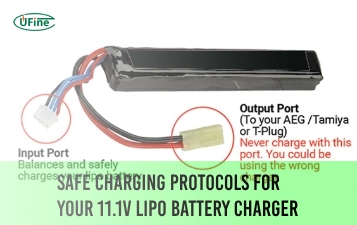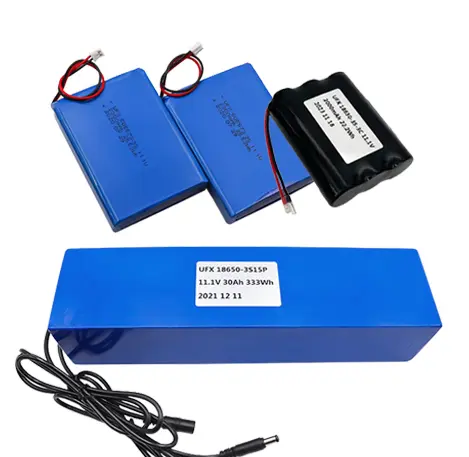E-bikes are revolutionizing the way we commute and explore the outdoors. But the heart of every e-bike is its battery, the powerhouse that fuels your adventures. Understanding e-bike batteries is crucial for maximizing your riding experience and extending the life of your investment.
This comprehensive guide delves deep into the world of e-bike batteries, covering everything from their components and types to choosing the correct battery for your needs and maintaining it for optimal performance.
Part 1. Understanding e-bike battery
Overview of Ebike Battery Components
Familiarizing yourself with its key components is essential to comprehend the inner workings of an e-bike battery. These elements work harmoniously to store and deliver electrical energy efficiently, enabling your electric bicycle to propel forward effortlessly.
Cells
The cells are the building blocks of an e-bike battery. They store electrical energy in a chemical form and convert it to electrical power when needed. Manufacturers typically use lithium-ion (Li-ion) cells in modern e-bike batteries because these cells offer high energy density, lightweight construction, and a long life span. These cells are often connected in series or parallel configurations to achieve the desired voltage and capacity.
Casing
The casing of an e-bike battery serves as a protective enclosure for the cells, shielding them from external elements such as moisture, dust, and impacts. It is usually made of durable materials like plastic or metal and designed to be lightweight yet robust.
Battery Management System
The management system of an e-bike battery plays a crucial role in monitoring and controlling the battery’s performance. It ensures the cells are charged and discharged within safe limits, prevents overcharging or over-discharging, and safeguards against short circuits or overheating. Through a display or app, the management system also provides the rider with essential data such as battery level, voltage, and temperature.
Battery Connectors
The connectors interface the e-bike battery and the electric motor or charging system. They allow the seamless transfer of electrical energy between these components. High-quality connectors are essential for efficient power transmission and minimizing energy loss.
Importance of Ebike Batteries
Ebike batteries provide the necessary power to drive the electric motor, enabling smooth and effortless rides. Here are a few key reasons why these batteries hold immense importance:
Power and Range
The performance of an electric bicycle heavily relies on the battery’s power output and capacity. A high-quality e-bike battery can deliver ample power to tackle uphill climbs and headwinds, ensuring a thrilling and enjoyable riding experience. Additionally, the battery’s capacity determines your electric bike’s range. A larger capacity battery can provide an extended range, allowing you to explore farther without worrying about running out of power.
Convenience and Versatility
Ebikes equipped with powerful batteries offer a level of convenience and versatility unparalleled by traditional bicycles. You can effortlessly switch between electric-assist modes, allowing you to conserve energy when needed or tackle challenging terrains easily. Furthermore, some e-bike batteries are removable, enabling you to conveniently charge them indoors or swap them with a fully charged spare battery for extended adventures.
Environmental Benefits
By opting for an e-bike over a conventional vehicle, you contribute to a greener and more sustainable future. Ebike batteries store energy from renewable sources and produce zero tailpipe emissions, reducing your carbon footprint and helping to combat air pollution. Choosing an e-bike with a high-quality battery ensures you make the most of this eco-friendly transportation alternative.
Part 2. Types of e-bike batteries
Ebike batteries come in various types, each with its strengths and considerations. Let’s explore some common types of e-bike batteries:
Lithium-ion (Li-ion) Batteries
Lithium-ion batteries are the most prevalent type used in e-bikes today. They offer a winning combination of high energy density, lightweight construction, and long life span. Li-ion batteries are available in different chemistries, including Lithium Iron Phosphate (LiFePO4) and Lithium Nickel Manganese Cobalt Oxide (NMC). These batteries provide excellent power output, have low self-discharge rates, and are generally more affordable than other options.
Nickel-metal Hydride (NiMH) Batteries
Manufacturers widely used NiMH batteries in the past but have since found them less popular due to the emergence of lithium-ion technology. They offer reasonable energy density and good cycle life but are heavier and bulkier than Li-ion batteries. Manufacturers are gradually phasing out NiMH batteries for more advanced and lightweight alternatives.
Lead-acid Batteries
Lead-acid batteries were one of the earliest e-bike batteries but are now considered outdated. They are heavy, have low energy density, and have shorter life spans than lithium-ion batteries. Lead-acid batteries require regular maintenance, including topping up with distilled water and careful handling due to their corrosive acid content. They are generally less efficient and less suitable for modern electric bicycles.
Part 3. How do you choose the batteries for electric bikes?
Consider the following factors when choosing a battery for your electric bike:
Capacity
Battery capacity, measured in watt-hours (Wh) or ampere-hours (Ah), determines the range and duration of your rides. Consider your typical riding needs and choose a battery with a capacity that aligns with your requirements. A higher-capacity battery will provide an extended range but may come at the cost of additional weight.
Voltage
The battery’s voltage should match the requirements of your electric bike’s motor. Most ebike systems operate on 36V, 48V, or 52V batteries. Ensure compatibility between the battery voltage and the electric motor to avoid compatibility issues.
Quality and Brand Reputation
Investing in a high-quality battery from a reputable brand ensures reliability, performance, and safety. Research different brands, read customer reviews, and consider warranties and after-sales support when deciding. A quality battery will have better longevity, enhanced safety features, and efficient power delivery.
Charging Time
Consider the charging time of the battery, especially if you have a busy schedule or rely on your electric bike for daily commuting. Faster charging batteries, or those with quick-charging options, can significantly reduce downtime and keep you on the move without extended waiting periods.
Weight and Mounting Options
Please consider the battery’s weight and compatibility with your electric bike’s mounting system. Ensure the battery securely attaches to your bike’s frame or designated mounting points without compromising stability or balance.
Part 4. How do you take care of your e-bike battery?
Follow these guidelines to ensure your battery remains in optimal condition:
Storage Temperature
Store your e-bike battery in a cool and dry place, away from direct sunlight and extreme temperatures. High temperatures can degrade the battery’s performance and shorten its lifespan. If you plan to store the battery for an extended period, aim for a temperature range of 0°C to 20°C (32°F to 68°F).
Regular Charging
Even if you don’t use your electric bike frequently, experts recommend charging your e-bike battery regularly. Partial discharge and recharge cycles help maintain the battery’s capacity and prevent cell degradation. Avoid fully discharging the battery or leaving it in a discharged state for extended periods.
Proper Charging Practices
Use the charger provided by the manufacturer or a compatible charger specifically designed for your e-bike battery. Follow the recommended charging guidelines and avoid overcharging the battery. Disconnect the charger once the battery reaches total capacity to prevent damage.
Cleaning and Protection
Keep your e-bike battery clean and free from dirt, debris, and moisture. Use a soft, damp cloth to wipe the exterior surfaces. Avoid harsh chemicals or abrasive materials that can damage the casing or connectors. Consider using protective covers or cases to shield the battery from impacts during transportation or storage.
Regular Inspections
Periodically inspect your e-bike battery for any signs of damage, such as cracks, leaks, or loose connectors. Contact the manufacturer or a qualified technician if you notice any abnormalities. Promptly addressing potential issues can prevent further damage and ensure safe operation.
Part 5. FAQs
-
How long does an e-bike battery last?
An e-bike battery typically lasts 2 to 6 years, depending on usage frequency and maintenance. -
How do you charge an e-bike battery without a charger?
You can charge an e-bike battery without a charger by using a compatible power source, such as a universal charger or a DIY charging setup. -
How do you reset the e-bike battery?
To reset an e-bike battery, you can often perform a manual reset by disconnecting the battery from the bike, waiting for a few minutes, and then reconnecting it. -
How much does an e-bike battery cost?
The cost of an e-bike battery varies depending on factors like brand, capacity, and technology. Still, it generally ranges from $200 to $1000 or more. -
How to remove the e-bike batteries?
To remove an e-bike battery, locate it on your bike’s frame, typically secured with a lock or latch, then follow the manufacturer’s instructions to detach it from the bike safely.
Related Tags:
More Articles

Safe Charging Protocols for Your 11.1V LiPo Battery Charger
Safely charge your 11.1V LiPo battery by following proper rates, using safety tools, and avoiding common charging mistakes.
11.1 V LiPo Battery Airsoft: Boosting Field Performance
Upgrade your airsoft gun with an 11.1V LiPo battery for faster firing, longer runtime, and top-tier performance on the battlefield.
Batteries for Trolling Motors Lightweight vs. Leaf Blower Power
Explore the best lightweight trolling motor batteries and how they compare to leaf blower power for performance, portability, and runtime.
What Is a 2C Battery?
Learn what a 2C battery is, how C-rates affect performance, and how to calculate the number of batteries your device needs.
What Battery Does LED Strips Use?
Discover which batteries power LED strips best. Learn about voltage, capacity, battery types, and how to safely power your LED lighting projects.




